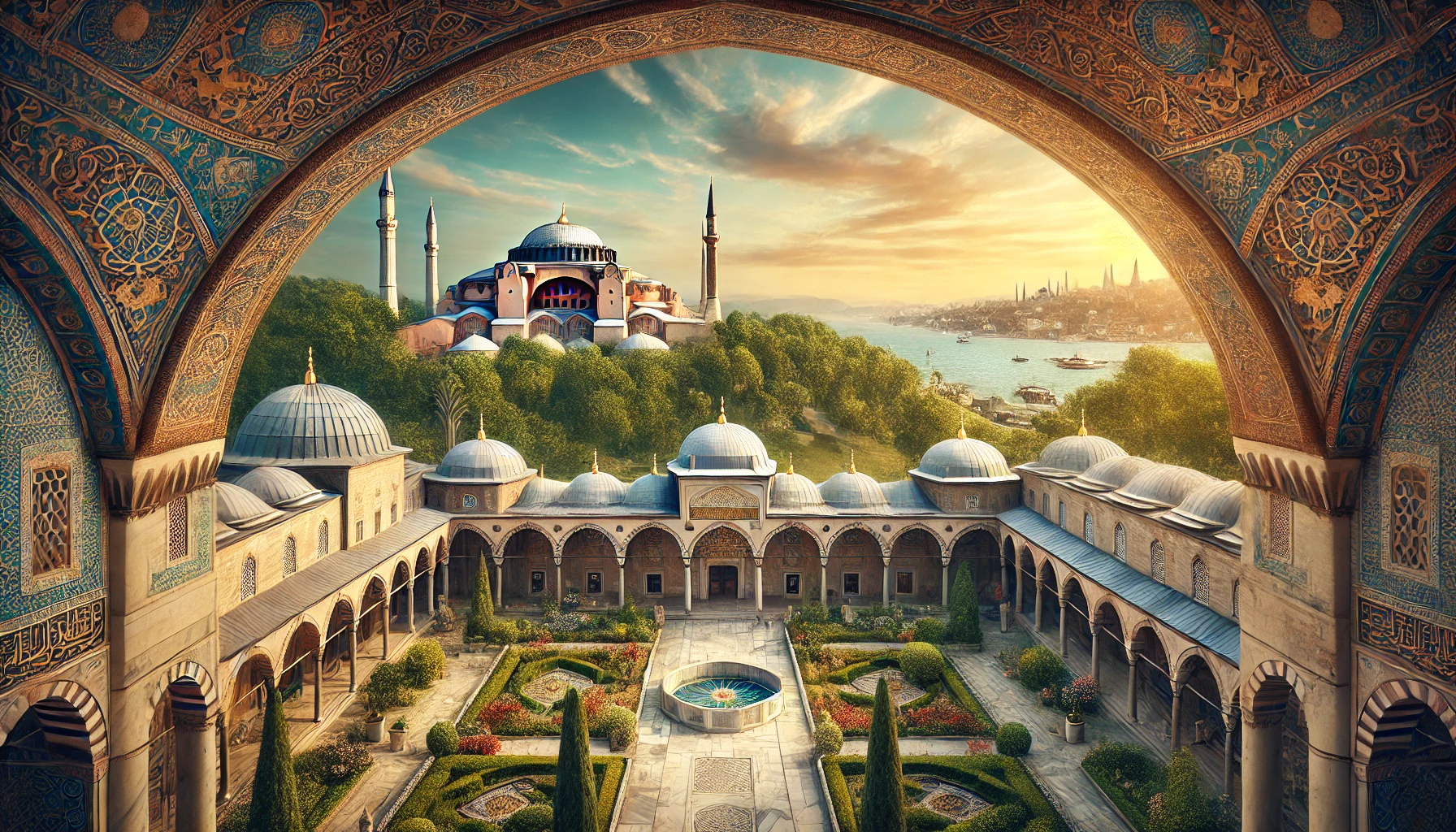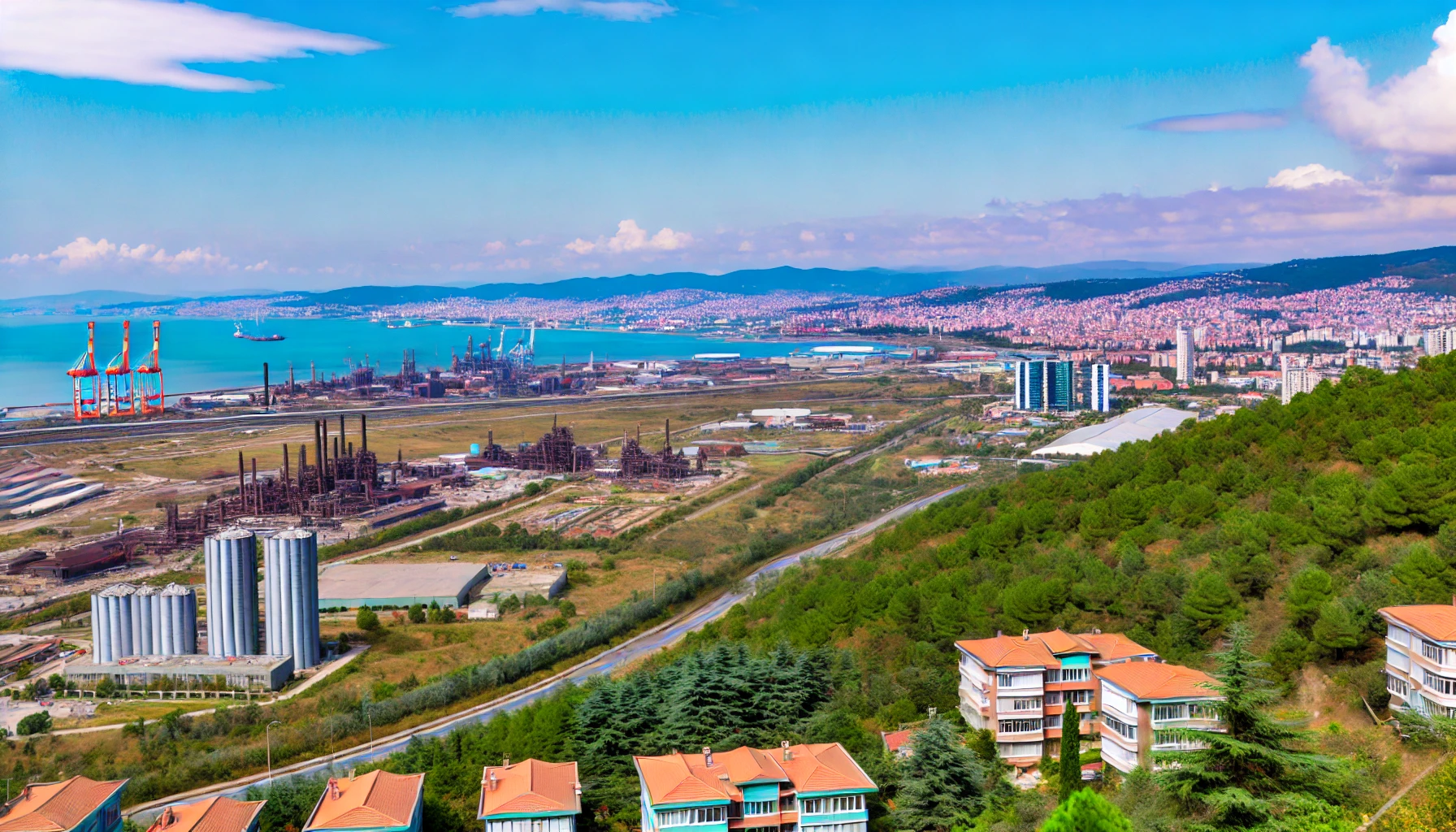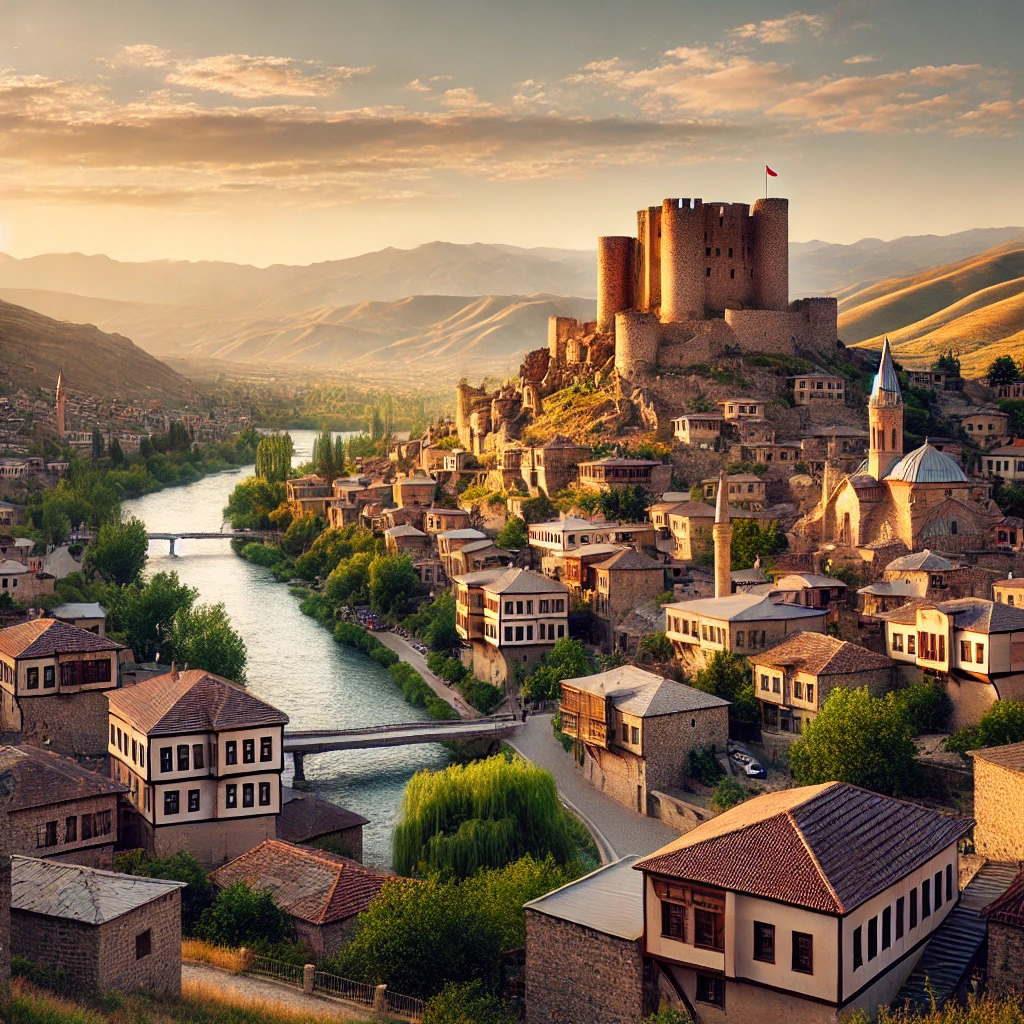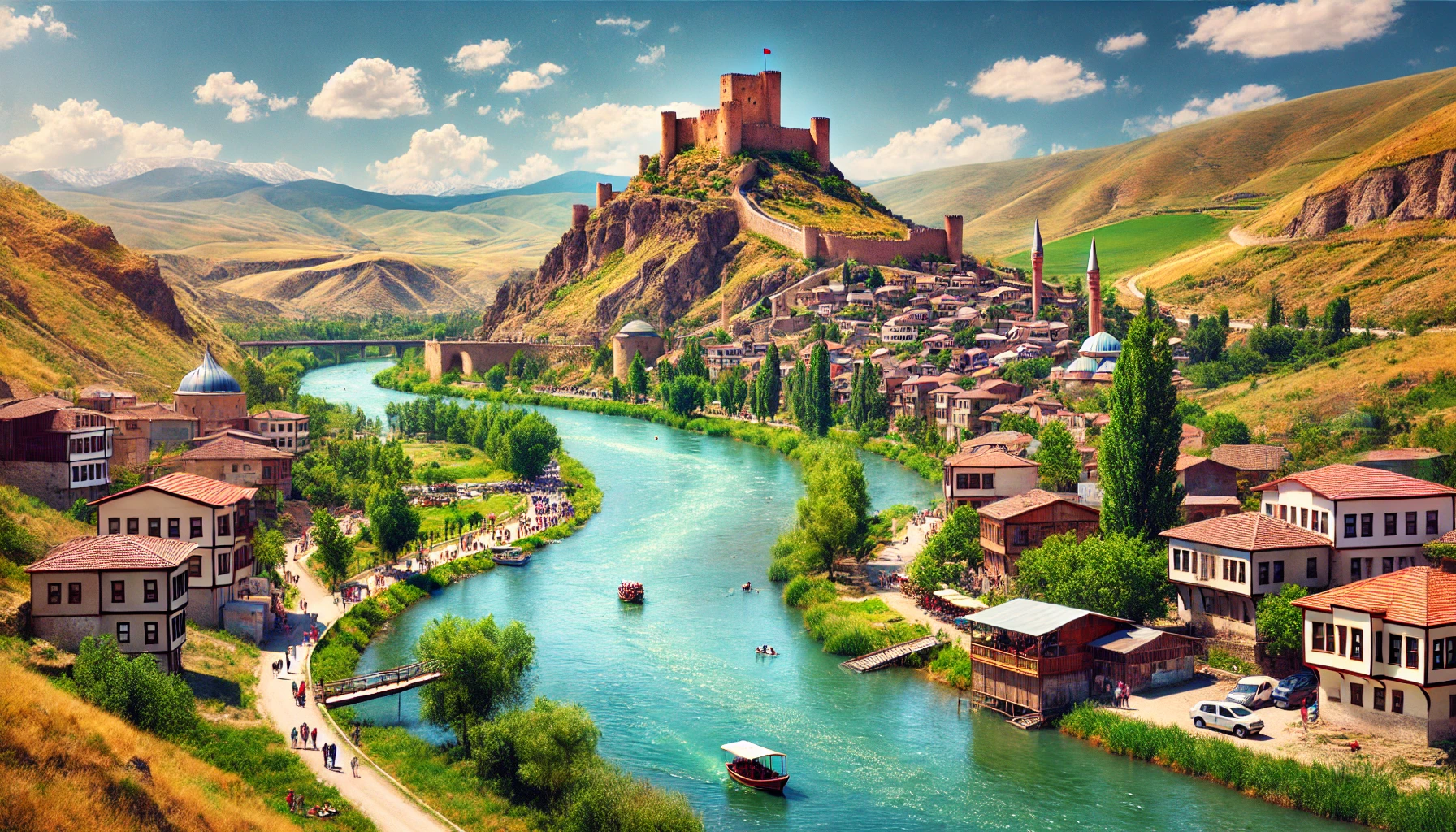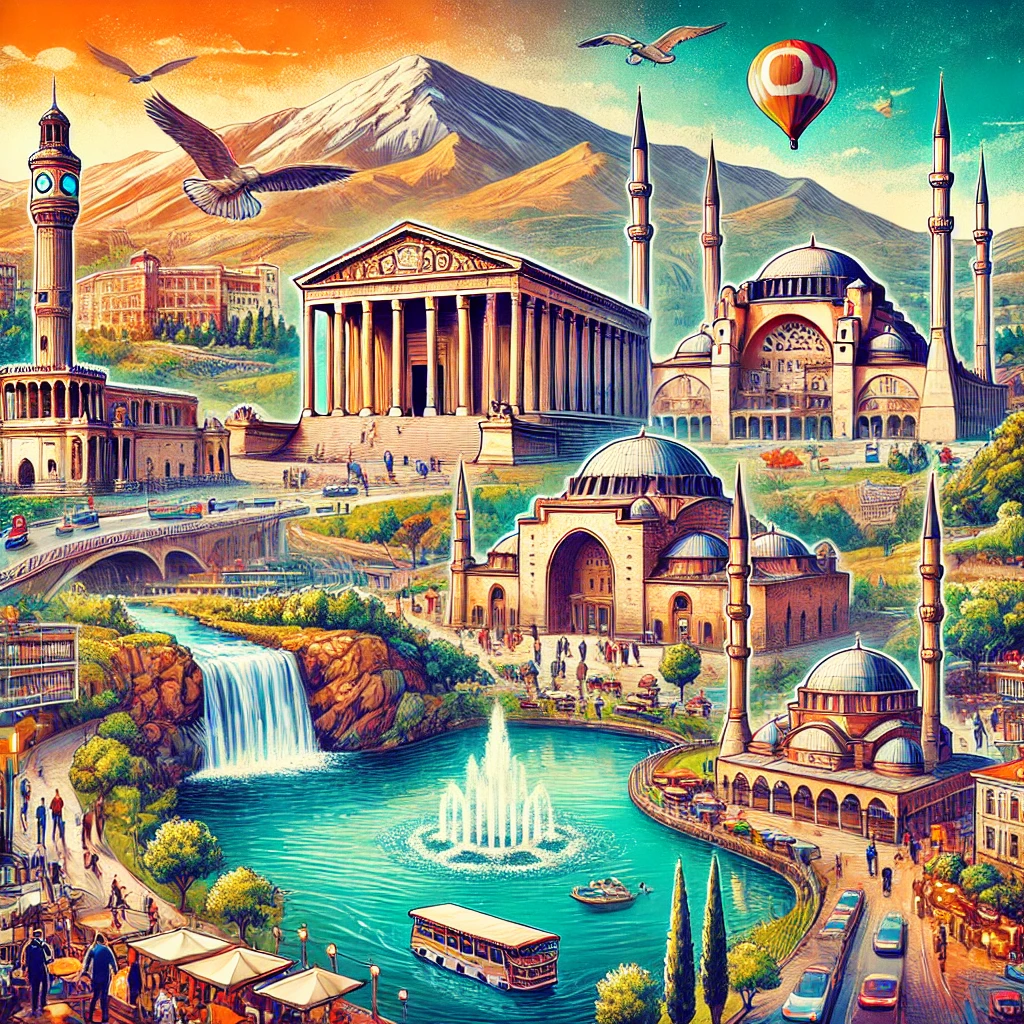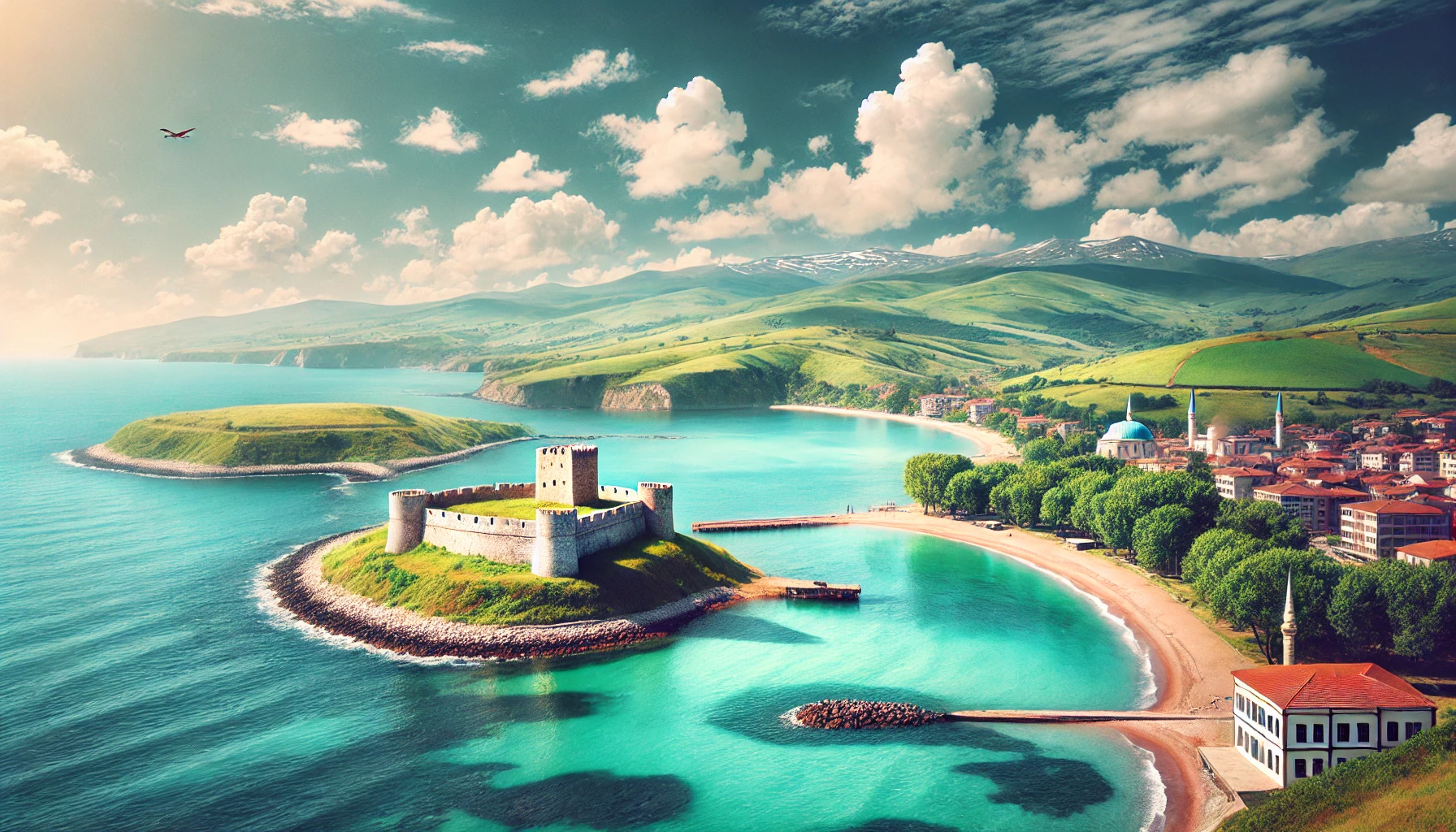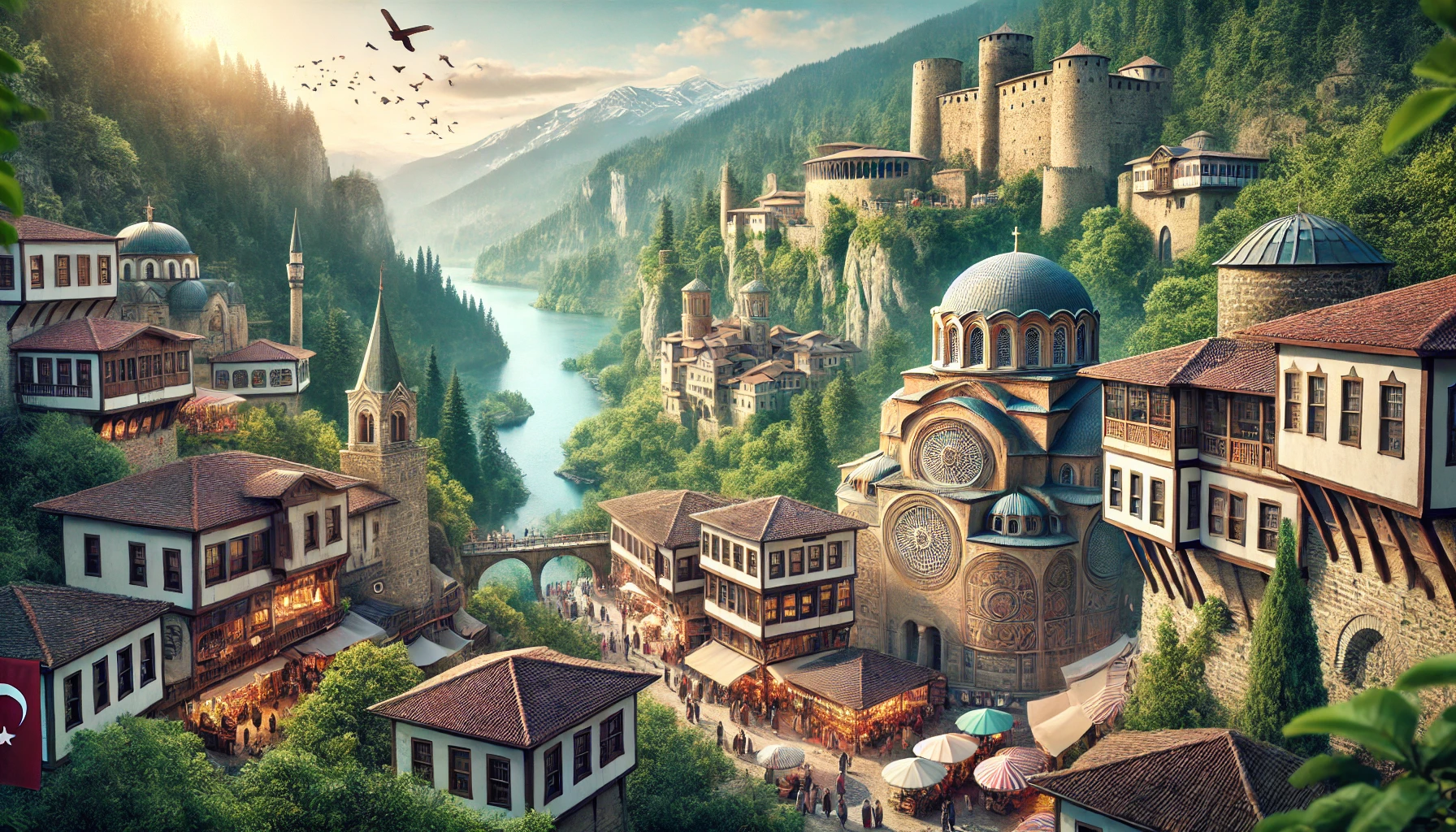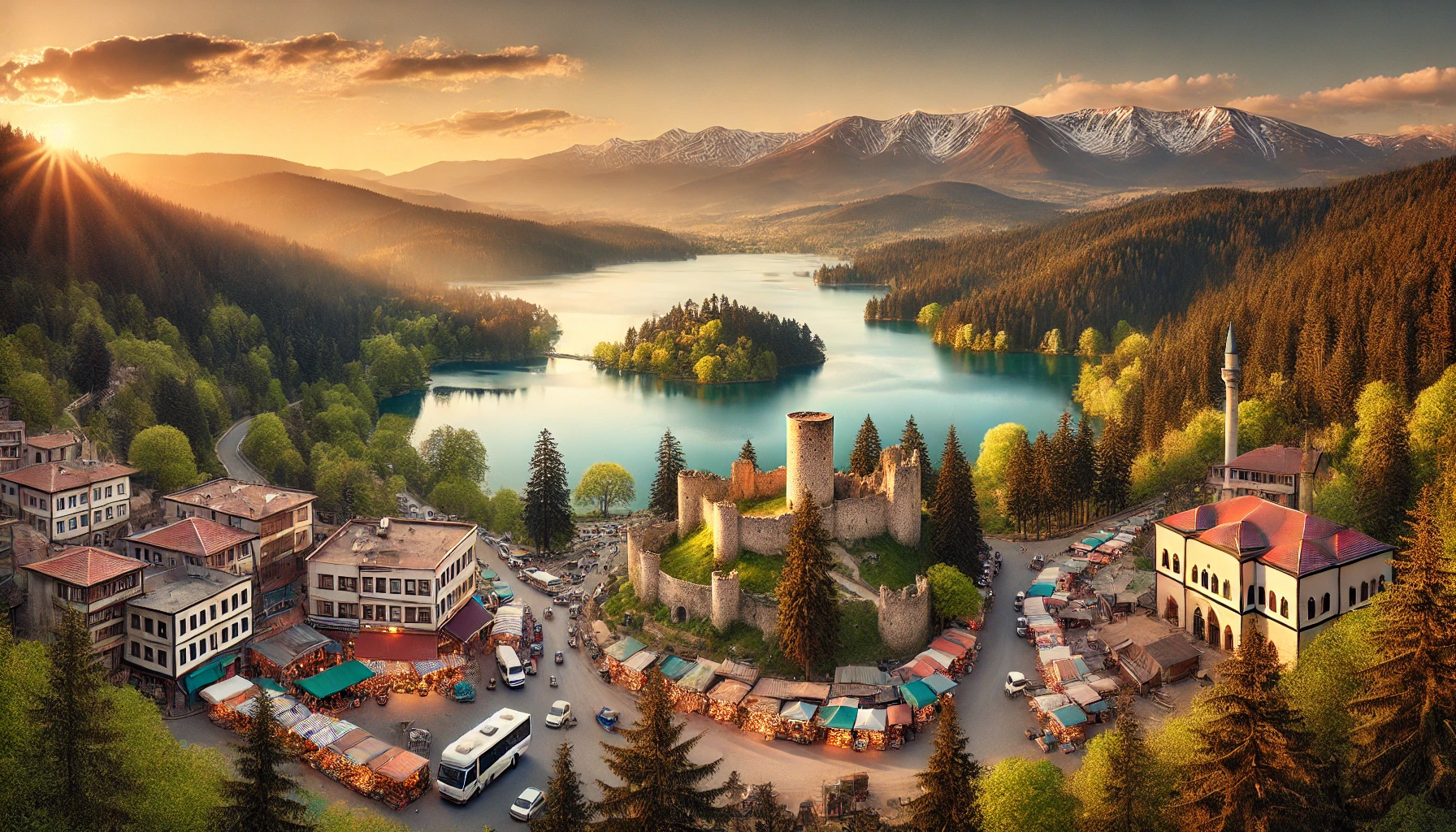Topkapi Palace: Exploring the Heart of the Ottoman Empire
Topkapi Palace, also known as the Seraglio, is one of Istanbul’s most iconic and historically rich landmarks. Situated in the heart of Istanbul, this magnificent palace complex served as the primary residence and administrative headquarters of the Ottoman sultans for nearly 400 years. With its grand architecture, lavish gardens, and extensive collections of artifacts, Topkapi Palace offers a fascinating glimpse into the opulent world of the Ottoman Empire. In this article, we will delve into the history, architecture, and significance of Topkapi Palace, providing an engaging guide for travel enthusiasts eager to explore this remarkable site.
Historical Overview: The Birth of an Imperial Palace
The Conception and Construction
Topkapi Palace was commissioned by Sultan Mehmed II, also known as Mehmed the Conqueror, shortly after his conquest of Constantinople in 1453. Construction of the palace began in 1459 and continued for several decades, with various sultans adding their touches to the complex. Initially known as the “New Palace” to distinguish it from the older Byzantine Great Palace, it was later named Topkapi, meaning “Cannon Gate,” in reference to a seaside gate near the palace.
Key Highlights:
- Sultan Mehmed II’s Vision: The palace was envisioned as a symbol of Ottoman power and grandeur, reflecting the empire’s vast reach and influence.
- Evolution Over Time: Over the centuries, the palace underwent numerous expansions and renovations, resulting in a sprawling complex of courtyards, gardens, and buildings.
The Role of Topkapi Palace in Ottoman Governance
For nearly four centuries, Topkapi Palace served as the epicenter of Ottoman administration. It was here that the sultans conducted affairs of state, held court, and entertained foreign dignitaries. The palace was not only a royal residence but also a center of political power, housing the imperial council, treasury, and various government offices.
Key Highlights:
- Imperial Council Meetings: The Divan, or imperial council, met regularly in the palace to discuss matters of state, presided over by the Grand Vizier.
- Residence of the Sultan: The sultans lived in luxurious quarters within the palace, surrounded by their families, concubines, and a vast retinue of courtiers and servants.
Architectural Marvels: The Design and Layout of Topkapi Palace
The Four Main Courtyards
Topkapi Palace is organized around four main courtyards, each with its unique purpose and architectural features. These courtyards are the heart of the palace complex, serving as spaces for official ceremonies, administrative functions, and private retreats for the sultans and their families.
1. The First Courtyard: The Imperial Gate and Outer Grounds
The First Courtyard, also known as the Parade Court, is the largest and most accessible part of the palace. It served as a public space where visitors could gather, and it is home to the impressive Imperial Gate, the main entrance to the palace.
Key Highlights:
- Imperial Gate: The grand entrance to the palace, adorned with ornate calligraphy and intricate designs.
- Hagia Irene: An ancient Byzantine church located within the courtyard, used by the Ottomans as a storehouse and armory.
2. The Second Courtyard: The Heart of Administration
The Second Courtyard, or Divan Square, was the administrative center of the palace. It housed the Imperial Council Chamber, the treasury, and the kitchens, where elaborate feasts were prepared for the sultans and their guests.
Key Highlights:
- Imperial Council Chamber: The meeting place of the Ottoman government, where crucial decisions were made.
- Palace Kitchens: Renowned for their size and efficiency, the kitchens could prepare meals for thousands of people daily.
3. The Third Courtyard: The Inner Sanctum
The Third Courtyard, also known as the Inner Palace, was a more private area reserved for the sultan and his immediate family. It includes the Imperial Treasury, the Privy Chamber, and the Library of Ahmed III.
Key Highlights:
- Imperial Treasury: Home to priceless artifacts, including jewels, armor, and religious relics.
- Library of Ahmed III: A beautifully decorated library housing a vast collection of manuscripts and books.
4. The Fourth Courtyard: The Sultan’s Retreat
The Fourth Courtyard, or the Imperial Sofa, was the most secluded part of the palace, offering a tranquil retreat for the sultan and his family. It features stunning gardens, pavilions, and terraces with breathtaking views of the Bosphorus.
Key Highlights:
- Baghdad Pavilion: A picturesque pavilion with exquisite tilework and panoramic views.
- Tulip Garden: A serene garden where the sultan could relax and enjoy the beauty of nature.
The Harem: A World Within a World
The Harem was the private living quarters of the sultan and his family, a complex of over 400 rooms designed to ensure privacy and seclusion. It housed the sultan’s wives, concubines, and children, as well as the eunuchs who guarded them.
Key Highlights:
- Queen Mother’s Apartments: Luxurious chambers for the Valide Sultan, the mother of the reigning sultan.
- Concubines’ Quarters: Living spaces for the sultan’s concubines, each vying for his favor and the chance to bear an heir.
The Treasures of Topkapi: Exploring the Palace’s Rich Collections
The Imperial Treasury: A Glimpse into Ottoman Opulence
The Imperial Treasury at Topkapi Palace is a dazzling display of wealth and craftsmanship, housing some of the most valuable treasures of the Ottoman Empire. From jewel-encrusted weapons to ornate ceremonial garments, the collection showcases the artistry and luxury that defined Ottoman court life.
Key Highlights:
- The Topkapi Dagger: A masterpiece of Ottoman craftsmanship, adorned with emeralds and diamonds.
- The Spoonmaker’s Diamond: One of the largest diamonds in the world, surrounded by a captivating legend.
The Sacred Relics: A Spiritual Connection
Topkapi Palace is home to a unique collection of sacred relics, revered by Muslims worldwide. These include items believed to have belonged to the Prophet Muhammad and other important figures in Islamic history.
Key Highlights:
- The Holy Mantle: A cloak believed to have been worn by the Prophet Muhammad, displayed with great reverence.
- The Staff of Moses: A relic said to be the staff used by the biblical prophet Moses.
The Imperial Wardrobe: Fashion Through the Ages
The Imperial Wardrobe collection at Topkapi Palace offers a fascinating look at the clothing and accessories worn by the Ottoman sultans and their families. The collection includes ceremonial robes, armor, and everyday garments, each reflecting the fashion trends of the time.
Key Highlights:
- Kaftans and Robes: Exquisitely embroidered garments worn by the sultans on special occasions.
- Armor and Weaponry: Ornate suits of armor and weapons showcasing the martial prowess of the Ottoman elite.
The Legacy of Topkapi Palace: From Royal Residence to Museum
The Transformation into a Museum
Following the fall of the Ottoman Empire and the establishment of the Republic of Turkey, Topkapi Palace was transformed into a museum in 1924. This decision marked a new chapter in the palace’s history, allowing the public to explore its rich heritage and architectural beauty.
Key Highlights:
- Museum Administration: The palace is now managed by Turkey’s Ministry of Culture and Tourism, ensuring its preservation for future generations.
- UNESCO World Heritage Site: Topkapi Palace is part of the Historic Areas of Istanbul, recognized by UNESCO for its cultural and historical significance.
Visiting Topkapi Palace: A Traveler’s Guide
For those planning a visit to Topkapi Palace, here are some practical tips and recommendations to enhance your experience:
Key Highlights:
- Opening Hours and Tickets: Topkapi Palace is open daily, except for Tuesdays. It’s advisable to purchase tickets in advance to avoid long queues.
- Guided Tours: Consider joining a guided tour to gain deeper insights into the history and significance of the palace’s various sections.
- Exploring the Harem: The Harem requires a separate ticket, but it’s well worth the visit to see its stunning architecture and learn about the lives of its inhabitants.
Cultural Significance: Topkapi Palace in Art and Literature
The Palace’s Influence on Ottoman Art
Topkapi Palace was not only a center of political power but also a hub of artistic and cultural activity. The palace’s architecture and design have inspired countless works of art, from intricate miniatures to grand architectural compositions.
Key Highlights:
- Ottoman Miniatures: Delicate paintings depicting scenes from palace life, showcasing the skills of court artists.
- Architectural Influence: The design elements of Topkapi Palace have influenced Ottoman architecture across the empire.
Topkapi in Literature and Film
Topkapi Palace has captured the imagination of writers and filmmakers, appearing in numerous literary works and films. Its grandeur and mystique have made it a popular setting for stories of intrigue, romance, and adventure.
Key Highlights:
- Literary Works: Novels and historical accounts that explore the palace’s history and the lives of its inhabitants.
- Film Appearances: Movies and documentaries that bring the splendor of Topkapi Palace to life on screen.
Conclusion: Embracing the Enchantment of Topkapi Palace
Topkapi Palace stands as a testament to the grandeur and complexity of the Ottoman Empire, offering visitors a window into a world of opulence, intrigue, and cultural richness. As you wander through its courtyards and chambers, you’ll be transported to a bygone era where sultans ruled and history was made.
Whether you’re a history enthusiast, an art lover, or simply a curious traveler, Topkapi Palace promises an unforgettable experience that will leave you with a deeper appreciation for Istanbul’s rich heritage. From its breathtaking architecture to its priceless treasures, Topkapi Palace is a must-visit destination for anyone exploring the wonders of Turkey.
Plan Your Visit to Topkapi Palace:
Embark on a journey through time and discover the splendor of Topkapi Palace. Explore its majestic halls, marvel at its treasures, and immerse yourself in the captivating history of the Ottoman Empire. Your adventure awaits!
Latest Update: Aug 4, 2024
Your Content Goes Here
Discover Topkapi Palace, Istanbul on the Map
Topkapi Palace, Istanbul
TAGS: architecture, historical site, Istanbul, Istanbul attractions, Istanbul historical sites, Istanbul landmarks, Istanbul travel guide, museum, Ottoman architecture, Ottoman Empire, Ottoman Empire history, Ottoman sultans, sultans, things to do in Istanbul, Topkapi Palace, Topkapi Palace artifacts, Topkapi Palace collections, Topkapi Palace Istanbul, Topkapi Palace museum, Topkapi Palace UNESCO, Topkapi Palace visiting tips, Topkapı Palace courtyards, Topkapı Palace Harem, Topkapı Palace Treasury, tourism, travel, Turkey, visit Turkey
A brief summary of the key points in this article.
Latest Travel Guides
Weather Today in Topkapi Palace, Istanbul, Turkey
Location: Istanbul
Temperature: 15.09°C
Condition: Broken clouds

